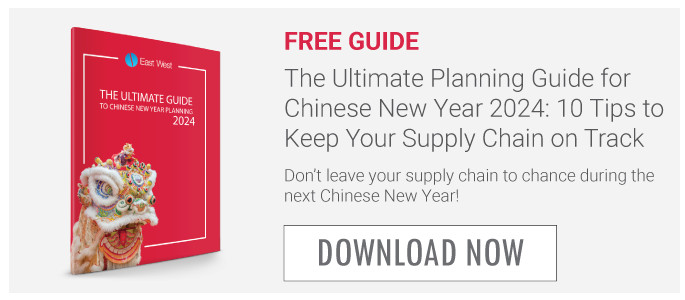If you are producing goods that need to meet specific safety criteria (flame retardancy, durability, etc.), you will need to submit your product to a third party testing lab to ensure it meets the applicable safety requirements. Before we jump into what you need to know before submitting a product for a certification mark, we’ll cover some basic questions you might have about the product safety certification process and options that are on the table.

Does My Product Require a Certification Mark?
Your product market will dictate if a listed mark is required. It is often dependent on the end use of the product and any elements to which the item would be subjected or vulnerable (e.g.,extreme temperatures, sunlight or threat of fire). While some industry standards are focused primarily on safety, others are more concerned with function and durability. Furthermore, requirements vary from state to state and insurer to insurer, so you'll need to do a bit of research ahead of time. Here are a handful of product categories that must be tested and certified:
- Electrical cables and mains powered equipment – must meet international electrical code
- Industrial components – must meet building codes (some examples: support beams for load capacity, building materials for mold resistance, water resistance......even zip ties must meet flame retardancy standards)
- Consumer goods that pose safety risks
Do I Have to Use a Specific Lab for Compliance Testing?
No! Contrary to popular belief, you do have options when it comes to selecting a third-party testing partner. The only major requirement is that the facility is a Nationally Recognized Testing Laboratory (NRTL) approved by the Occupational Safety and Health Administration (OSHA). Here’s the thing: A good chunk of industry standards were written by Underwriters Laboratories (UL), causing many people to think they must use UL for testing. However, your product simply has to meet UL standards, which can be done by alternate testing labs.
Below are just a few third party testing lab options. Their certification marks are recognized and accepted by manufacturers, retailers, distributors and authorities having jurisdiction (AHJs). For a more extensive list of certification marks, click here. A more recent regulation was born in 2010 with the passing of the Dodd-Frank Act, which applies strict rules to the use of conflict minerals.
Underwriters Laboratories (UL)
From their website: Founded in 1894, UL is a global independent safety science company with more than a century of expertise innovating safety solutions from the public adoption of electricity to new breakthroughs in sustainability, renewable energy and nanotechnology. Dedicated to promoting safe living and working environments, UL helps safeguard people, products and places in important ways, facilitating trade and providing peace of mind.
I'm Planning to Sell My Product in Europe – What Do I Need to Know?
If you plan to distribute and sell your product in Europe, it will need a CE Marking in addition to US or Canadian certifications. Many third party testing labs can test to all applicable standards at once, so be sure to ask about this option to save time. Some countries within the EU even have their own set of product safety standards, so do your research. The CE Marking was known as the EC Mark until the name was changed in 1993. The CE Marking acts as a manufacturer's guarantee that the product satisfies the requirements of European safety, health and environmental protection laws for that product category and application.
Other European standards to keep in mind (depending on your product category) include RoHS and ATEX Directive.
What Does a Certification Mark Mean to Consumers?
A listed mark shows consumers that your product has been tested by an NRTL and has met the minimum requirements of national product safety standards for its particular product category. The mark also represents your agreement to routine audits to assure continued compliance.
5 Things to Know Before Product Submission
And now for the main event: Let's look at 5 important things you should know before you start the certification process.
1. This will be Expensive
Getting your product tested and approved is going to be more than a drop in the bucket – we’re talking a couple to a few thousand dollars. Be sure to work these costs into your budget. Itemized costs include a submission fee in addition to an annual fee for the testing lab to maintain your product’s file. And guess what? Every component and material in your original design must be tested and meet the intended purpose of the product. Another cost to consider comes with labeling requirements. Some labs may require use of a certified label vendor for things like holographic images or specially coated (abrasion resistant) labels. This could add unexpected costs over the life of the product.
Our Tip: Review the standard for your product before you complete the design process and definitely before you submit your product for testing! It is much easier to design a product with the requirements in mind than to redesign a product to meet those requirements. Most labs will offer pre-testing consultations during which they will review your design and provide feedback. While this comes at a cost, it may be worthwhile if you are new to the game.
2. Hurry Up and Wait
This is not an overnight process! You must consider the testing and certification timeline in your production schedule. Many people don’t realize how long it can take and drastically underestimate their time-to-market. There may be an expediting option if you are in a serious time crunch but this, of course, comes at a premium (more cha-ching).
Our Tip: Speak to the testing lab about a realistic timeline, and don’t be afraid to shop around. If UL quotes 6 months for testing and ETL quotes 3 months, choose the option that works best for your schedule.
3. It’s Not a One-and-Done
Awesome, your product was certified. The end. Guess again! Be prepared for quarterly (or at least periodic) inspections and audits to ensure your product maintains conformance. Maybe you find quarterly audits excessive, but let’s look at it from the testing lab’s perspective: they are putting their name on your product, telling consumers they tested its performance thoroughly and it is indeed safe, so of course they are going to confirm it is truly safe throughout its entire life cycle. Should a product be found in non-compliance, you will receive a variation notice (VN) and will need to resolve any issues immediately.
Keep in mind that standards are routinely revised as well. This could impact your certification costs due to new testing requirements or changes to the product design to meet the latest requirements. Some products may be grandfathered into the new standard, but there are no guarantees.
Our Tip: Don’t cut corners, try to find loopholes or think you can outsmart the lab. You will get into serious trouble and only cost yourself time, money and headaches. Also, only work with reputable suppliers who can be trusted and understand the importance of compliance.
4. This is Not a Time for Brevity
Any testing lab you choose is going to ask you for a whole lot of detailed information. The more thorough you are up front, the easier and smoother the process will be. Labs have extensive guidelines for formatting and necessary documents, so sift through this information with a fine-toothed comb to ensure you're meeting their requirements.
Our Tip: Try to get things right the first time around. If your product is not initially certified, you will have to make crucial modifications and get back in line – starting over from the very beginning in some cases. This can seriously slow you down, so always do your due diligence ahead of time.
5. Design Changes Just Got More Complicated
Making a design change? Not so fast. If you are modifying parts, materials or suppliers for an already certified product, you must either choose a material that is approved by the lab (example: UL has a directory of approved components), or you will have to submit your revised design for retesting and recertification. You guessed it: This means more time and money.
Our Tip: Do some serious number-crunching when it comes to DCs. The ROI of a product enhancement may not outweigh the recertification costs in the long run. Is the change necessary to resolve an issue or improve performance? Will the market respond overwhelmingly to the change? Do some research and understand associated costs ahead of time to make the best decision.
The good news is that once you’ve gone through the motions, you will know what to expect the next time around and learn from any mistakes you made. Although the process could be slow and frustrating at times, it is a critical step for many products. Selling an uncertified product could land you in a mess, so try to avoid this at all costs.




.jpg?width=176&height=56&name=MR_associatedNetwork_logo%20(1).jpg)